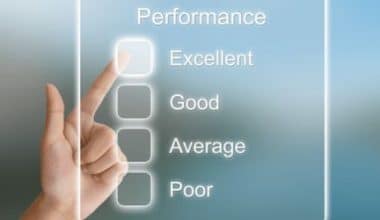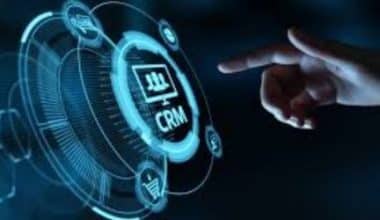Each business field has an automated system that makes its daily operation productive. The truth is, restaurants are not left out. As a matter of fact, running a restaurant without a management system will directly affect your productivity. Generally, restaurant personnel use these technologies to keep track of inventory, payroll, orders, and analytics. This may include a POS restaurant management system, an open source cloud-based platform, and so on. Managers and business owners can use these tools to compare business operations across different locations, make the onboarding process simpler for new workers, and track employee performance. These tools can be used for either specialized restaurant types or restaurants as a whole.
Restaurant Management System
Management in restaurants refers to the practice of controlling everyday activities at a restaurant or other similar settings. It involves a broad range of responsibilities, such as managing the workforce, promoting corporate growth, maintaining the company’s finances, and delivering exceptional customer service.
These solutions could be significant restaurant technology since they combine so many different processes in one location. With a complete restaurant management system, it is possible to conduct services like payment processing, financial administration, sales tracking, performance monitoring, employee management, and others.
What Features Make Up an Effective Restaurant Management System?
Every management system has key qualities that distinguish it from other systems. The following are the key features of an effective restaurant management system;
#1. Cloud-Based
The first feature of an effective restaurant management system is that it must be based on the cloud. Software for managing restaurants that are hosted in the cloud has a variety of benefits that are more conventional than on-premises implementations. For instance, data is regularly updated and backed up, managing remote software access is greatly simplified, and start-up costs are decreased in exchange for foreseeable subscription payments.
There are benefits in terms of greater security and compatibility with other applications that perform similarly, even if employing software that uses cloud architecture demands a permanent internet connection.
#2. Reporting & Analytics
Systems for managing restaurants often include reporting and analytics features. Most often, a dashboard that is easily accessible will provide a basic overview of the important data that people involved in restaurant management may need to be aware of on a daily basis. Additionally, you may also generate in-depth reports concurrently.
People, owners, as well as other executives are now able to track the performance of their restaurants over time. Moreover, we use analytics tools to assess, examine, and comprehend the vast data collections of restaurants.
#3. Further Integrations
Modern businesses commonly utilize a variety of different programs, thus the transfer of data must be as seamless as possible. Because of the need for them, the top restaurant management software solutions must include integration options. Service providers offer specific cloud-based solutions that may tailor the restaurant management system for each of them based on the connectors that each business needs. When this is not practicable, then you must be willing o offer a basic level of connection with restaurant POS, revenue management, and CRM systems.
#4. Technical Support
Finally, the restaurant management system you select must be able to provide technical assistance. Since problems with your software or system failures have the potential to disrupt your entire business, you must seek solutions as soon as possible. Technical support features can come in many different forms, such as built-in help, troubleshooting, and tutorial sections within the product itself, access to live chat support, or a ticketing system for professional assistance.
Types of Restaurant Management Systems
Hey, we can’t possibly tell you the importance of restaurant management systems without highlighting the various types that exist. Of course not. So check our list of the most significant categories or components of restaurant management systems below;
#1. POS Software
First on our list of restaurant management systems is the POS software/system. The point-of-sale system, or POS system, in your restaurant is where you carry out a variety of sales-related tasks. To put this more abruptly, the POS restaurant management system manages your invoicing, issues invoices, and takes payments with cards, cash, or mobile wallets. All of this data will then automatically feed into more in-depth corporate data.
#2. Restaurant Management Software
Restaurant management software’s goal is to simplify some of the essential management-related tasks involved in running a restaurant. To view all reservations and keep this information current to avoid double bookings, for example, it can merge data from all online booking sources.
#3. Order Management Software
The order management software part of restaurant management systems focuses on managing client and supplier orders. When customers place orders, your order management software may collect information and instantly adjust stock levels.
#4. Employee Management Software
You may manage tasks linked to managing your staff using the employee management feature found in all trustworthy restaurant management systems. This can involve making decisions that assist you in putting together a schedule that balances the needs of your business with the availability of your staff and your contractual obligations.
#5. CRM and marketing software
Customer relationship management (CRM) is crucial for restaurants since customers may get in touch with you with specific requests, dietary questions, or complaints. CRM features in restaurant management systems allow for the simplicity of centralizing all interactions.
POS Restaurant Management System
Restaurant management software is linked to a point of sale (POS) system. While restaurant management software has POS features, it also has a wide range of other features that can help in managing a restaurant. The restaurant POS category contains tools that primarily help with POS functionality. Here are some POS restaurant management systems:
#1. Posist Restaurant POS
Posist, a B4B (Business-for-Business) company, works with big multinational restaurant chains through its restaurant technology platform to assist them in becoming digital businesses. It has over 10,000 restaurants worldwide. Operators of large-scale restaurants can grow, become more profitable, and offer dependable customer service.
#2. Toast
Toast is a full-featured restaurant technology platform. In fact, it’s one of the few POS restaurant management systems that integrates online ordering. Other features include gift card and loyalty programs, labor and sales reporting, and many more. Toast is a mobile, cloud-based point-of-sale system created specifically for restaurants. You can improve operations, boost income, and expand your knowledge of business thanks to Toast. To create the best eating experience possible, Toast wants to work with customers to find solutions to the unique challenges the restaurant sector faces.
#3. Restaurant365
A SaaS-based accounting and operations tool made exclusively for restaurants is called Restaurant365. In order to provide operators with advanced data, save them hours of work each day, and assist them in making decisions that will maximize earnings, it interfaces with POS, vendors, banks, and payroll.
#4. Lavu
In addition to bars, nightclubs, and lounges, Lavu is a point-of-sale system for franchise, full-service, and quick-service restaurants, as well as food trucks and coffee shops. Beyond only handling orders and payments, Lavu’s restaurant management software does more tasks. Lavu restaurant management design is a fully-featured solution for all your restaurant administration requirements, offering capabilities for managing employees such as scheduling, trading shifts, and payroll reports, as well as complete sales and inventory reporting, inventory management, online ordering, and more.
Moreover, it’s a cheap, user-friendly system that your business can rapidly install and start using. Additionally, operating it is easy to understand. Trust Lavu POS to simplify your restaurant management system irrespective of its size.
#5. NCR Aloha POS
The NCR Aloha Platform is an all-inclusive point-of-sale and management system for eateries that enables them to streamline system administration, lower variable labor, and inventory costs, optimize on-and off-premise sales and operations, and quickly react to trends that are exploding.
The NCR Aloha Platform has been developed and enhanced over time by brilliant minds in the food service industry. To ensure that customers who use Aloha can learn the system more rapidly, perform their duties faster, and make fewer mistakes than they could with any other system on the market, we interact closely with our clients, industry veterans, and some of the most known usability experts.
Restaurant Management System App
Generally, developers design restaurant management system applications to enhance productivity. Streamline your front and back-of-the-house operations so you can concentrate on the important things. Restaurant technology should not add needless complication to the industry; rather, it should assist restaurateurs to succeed and concentrate on what they love. What app is the most suitable for your restaurant, then?
#1. Deputy
Tasking, communication, time & attendance tracking (using a digital time clock), and employee scheduling are all part of the Deputy platform. Deputy’s mobile apps let you manage your staff from anywhere. Employee clock-in and clock-out are completely self-service using the Deputy iPad kiosk software. All are fueled by an uncomplicated, obvious design. In fact, the Deputy restaurant management system has a complete workforce management solution. Everything from payroll integration to employee rostering is inclusive in a single solution.
#2. Tripleseat
Hotels, restaurants, and other venues can use Tripleseat SmartSuite, a cloud-based sales and event management tool, to streamline the event planning process. SmartLeads is used to collect leads from multiple sources, SmartDocs to produce and manage event proposals, orders, and bills, and SmartChat to make it easier for clients to communicate with event organizers. In addition, Tripleseat offers tools for managing contacts, a calendar for scheduling events, financial and sales data, and more.
#3. HotSchedules?
A labor management and employee scheduling application called HotSchedules is designed for use in businesses that cater to their customers, such as restaurants, shops, and hotels. The HotSchedules platform automates operational tasks like scheduling, shift communication, reporting, forecasting, hiring, and training.
The native Android and iOS mobile apps are available to all employees, and they may be used by users to handle time-off and shift-swap requests from a distance. Use a cloud-based database to store documents and employee information that you can access from anywhere at any time. Set up employee training programs with the Schoox tool and hire workers cheaply with the HotSchedules Recruit tool.
#4. Jolt
A platform for the administration of employees and operations to ensure food safety. a one-stop shop for labeling, attendance, training, scheduling, and temperature data. Real-time information & notifications allow operators, managers, and FBCs to stay on top of the business even when they are not in the office. reducing labor costs while increasing worker accountability, productivity, and effectiveness. Even though the cost of our labeling method is one-fourth that of Day Dots, millions of jobs have been completed by thousands of employees.
#5. Snapshift
The HR app Snapshift makes life easier for retailers (hotels, restaurants, shops, pharmacies, gyms, etc.). A very user-friendly program is used to manage all areas of HR management, from planning to payroll, and it is accessible on both PCs and mobile devices.
More than 4,500 clients currently use the application every day to streamline their HR administration across all sizes and industries (bakeries, restaurants, hotels, pharmacies, food distribution, gyms, leisure activities, etc.). The time-saving management solution that gives managers a global perspective is Snapshift.
Restaurant Management System Design
Restaurant management system developers ensure that each design will have the power and flexibility to handle the entire system from a single interface thanks to this technology. The system gives the manager the ability to reserve tables, create bills, and keep track of the system’s available tables. Here is some restaurant management system design.
#1. Architecture of the System
This restaurant management system has a simple three-tier client/server design. The client can access the system (the restaurant menu) through web browsers on a tablet and the restaurant’s local area network using the HTTPS protocol.
The middle tier, which also houses the server and oversees the business logic, is responsible for displaying the website to the user. It controls the interactions between the user and the application. The printers for the Kitchen Order Tickets and the Point of Sales (POS) system also receive user orders from the server. Here, you can use common web server technologies like Apache, Nginx, and others.
The data tier is responsible for maintaining the application’s data, including order data, menu data, reservation data, etc. These data are kept in a relational database management system (RDBMS), such as PostgreSQL. The client tier interacts with the server to make requests and retrieve data from the database. The data that was collected from the server is then displayed to the user.
#2. Subsystem Decomposition
Subsystem decomposition is another great restaurant management design. By dividing the system into smaller parts, or “subsystems,” the complexity can be reduced. Subsystems are just groups of linked class packages. The following subsystems make up our restaurant management system as well. The important subsystems are “Authentication,” “Menu,” “Reservation,” “Order,” and “Kitchen.”
Customers may reserve tables more easily thanks to the reservation system, which also handles the payment of the reservation fee in the event of a no-show. The Order subsystem keeps track of the user’s menu selection. For the purpose of charging through the Point of Sales system, the order is put together. The data is also delivered to the Kitchen subsystem for processing. The kitchen subsystem is in charge of printing order tickets for the kitchen and making inventory adjustments.
#3. Database Design
The last restaurant management system design that we’ll consider is database design. A restaurant management system software must be used to keep information on orders, menu items, reservations, and other items. We have therefore identified the key tables that the selected RDBMS would implement.
Relationships in relational database systems frequently come in one of three varieties. They are one-to-one, one-to-many, and many-to-many relationships. In the system under investigation, there are both one-to-many and many-to-many linkages.
The data for each is stored in the tables for reservations, orders, and menus, respectively. Each Order may have one or more order items attached to it. Every order item includes a meal item and any necessary ingredients. The Menu table connects the Restaurant Staff and Food Item tables. The Payment table contains the details pertaining to a certain order.
Open Source Restaurant Management System
Every kind of restaurant aspires to grow financially and become well-known. The chance of growth will increase by implementing a free and open-source restaurant management system, which will free up staff members’ time to concentrate entirely on serving customers. Aside from this, you also get to save costs with open-source restaurant management systems. Imagine getting a first-class cloud-based open source restaurant management system as opposed to premium ones that cost extra dollars. This program is necessary for updating and selecting menus, placing orders, and accepting payments. It is a platform designed to reduce labor expenses and broaden commercial opportunities.
To get a clear sense of the seven best open source and free restaurant management programs, look over the list below.
#1. TastyIgniter
The first open-source restaurant management system that we’ll consider is TastyIgniter. The primary purpose of TastyIgniter is to efficiently automate a restaurant’s daily procedures. It’s built on the Laravel PHP framework and works as an effective platform for managing restaurants. Additionally, it is easy to use and has powerful features like a single interface, an attractive and mobile-friendly design, extension availability, and customized distribution zones.
#2. Floreant POS
Another great and famous open-source restaurant management system is Floreant POS. Users of the Floreant POS restaurant management system have immediate access to the platform because of the straightforward setup and installation processes. It is capable of handling complexity because of a solid back-end database. They are widely used because issues are quickly corrected, keeping them up-to-date. If you’re in search of the best open-source restaurant management system, you should check out Floreant POS.
#3. Bevspot
A free trial is available for Bevspot, a restaurant management system with robust features and data-driven insights. It helps manage a restaurant wisely by providing all information relating to unused stock or overpricing. It helps to produce more profitable ordering options.
Additionally, managing the entire restaurant is made feasible via the Enterprise Dashboard, where all permits and data are easily accessible. This restaurant management system enables quick comparison of all employee performances and quick switching between several accounts.
#4. ZoomShift
Another famous open-source restaurant management system that we’ll be considering as a result of its great features is ZoomShift. ZoomShift’s work schedule is well facilitated, and as a result, workers are free to focus on higher-value work. Automated alerts that are given to employees prior to their shift increase staff accountability and increase output. This open-source restaurant management system software originally came with a free trial version.
Utilize the timesheet to efficiently track time and lower labor expenditures. Spend the majority of your time enhancing teamwork and efficiency, and avoiding timesheet errors. Utilize the mobile application to examine and edit the timesheet and keep total control over how much it costs and how much time it takes to manage workers.
#5. Shore
Shore provides a platform with the goal of eliminating tedious administrative tasks that are done on a daily basis. With their improved digital employee organizer, shift planning and organizing have become more enjoyable and interactive. The shore is one of the best restaurant management systems with a free trial.
Because Shore provides a lot of tools to make running a restaurant more convenient, it is a good platform for someone looking to grow their business. Shore makes it possible for a wide outreach to attract potential customers by enabling the scheduling of meetings via social media. It also provides data that may be utilized to evaluate the performance of the restaurant and, if necessary, make improvements.
What is Restaurant Management System?
Software that facilitates the streamlining of business processes for the food industry is referred to as a restaurant management system. Specifically, eating establishments, bars, bakeries, cafes, cloud (ghost, dark, virtual) kitchens, food trucks, or delivery services.
What are the Types of Restaurant Management Systems?
Restaurant management system types
- All-in-one restaurant management solutions.
- Point-of-sale systems.
- Online ordering software.
- Payroll and accounting systems for restaurants
What is Restaurant Inventory Management?
The practice of keeping track of the ingredients coming into and leaving your restaurant is known as restaurant inventory management. Inventory management keeps track of the quantity of the ordered product, everything that leaves the kitchen and bar, as well as any leftovers that become sitting inventory.
What System do Most Restaurants Use?
The Most Important Restaurant Hardware and Technology
- Point-of-Sale terminals with touchscreens.
- Place your order and pay at the table.
- Portable point-of-sale devices.
- Using contactless payments.
- Self-Order Kiosks.
What are the Benefits of a Restaurant Management System?
The following are five awesome benefits of the restaurant management systems design.
- Quick and simple scheduling.
- Save money and stick to your budget.
- Keep an eye on any issues involving your staff.
- Maintain Staff Up-To-Date.
- Share Personnel Among Several Locations
Why Restaurant Management System is Important?
In essence, a restaurant management system aids in the streamlining of many company processes.
Conclusion
The primary objective of the restaurant management system is to help the restaurant manager run the restaurant better and more efficiently by using computers to handle meal orders, bills, and inventory. Thus, it must let people add and take away table reservations, add and take away menu items, generate bills, and so on. If it doesn’t cover these scopes, then it’s not effective.
Restaurant Management System FAQs
What is the objective of restaurant management system?
The primary objective of the restaurant management system is to help the restaurant manager run the restaurant better and more efficiently
What is restaurant information system?
A restaurant information system is mostly like the digital brain of a restaurant. Generally, it lets management know what’s going on in the restaurant and what to do about it.
- PLANNING RESTAURANT BUSINESS: 10+ Tips to start Off Rightly
- RESTAURANT BUSINESS: The 21st Century Business Guide (+ Detailed ideas)
- MOST EXPENSIVE RESTAURANT IN THE WORLD: Top 17+ Luxurious Restaurants 2023






